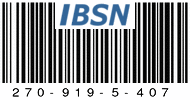Wethau. The terrain and the rules
This Lasalle Scenario is based on a real combat fought between the Augereau's IX Corps and the Liechtenstein's Austrian 1st Light Division and the Streifcorps of Thielmann and Mendorff along a stream and in the plain beyond it.
For the narrative I have used the following bibliography:
- Tableau de la Campagne d'automne de 1813 en Allemagne. Dimitrij Petrovič Buturlin.pp 102-103 (1817)
- Campagne de 1813. La cavalerie des armées allies. M.H. Weil, pp 205-210 (1886)
- Napoleon at Leipzig. The Battle of Nations 1813. George Nafziger, pp 81-85, Emperor's Press (1996)
The Scenario specific rules were already used and tested in other Scenarios:
Assault of defiles
Lasalle does not allow march columns to fight, so the assaults on defiles, such as bridges, fortified gates, field fortifications, etc. can not be played on the table in a convincing way. There were some friendly discussions in the Lasalle Forum regarding this topic. At last, I have used the Scruf’s proposal:
(1) A march column can assault a defile like a bridge, a fortified gate, a fort, etc. It represents not only true march columns, but also all those formations with a much reduced front.
(2) It fights halved dice and with no previous shooting, adding a -2 for "bad terrain" as they will be fighting in cramped quarters.
(3) The defending enemy may use the "cover" or "higher elevation" modifiers when applicable.
(4) However the small front, the enemy never halves their dice
Optional rule for baggage units (As for my suggestion in Lasalle e-book p. 143)
(1) The wagon moves as if it were a foot artillery unit, always limbered.
(2) The wagon neither fires nor can charge the enemy. It has only one formation: limber. It does not block line of sight or fire. It may not be fired upon.
(3) Friendly units may move through it, as they move through a limbered artillery unit.
(4) Any enemy unit - regular or irregular - may charge the wagon, as long as that unit is eligible to charge (it is in a formation that permits it to charge, it is facing the right way, etc.)
(5) In its reaction phase, the wagon may attempt a Fall Back, as if it were a foot artillery limber. It succeeds on a roll of 4+, but if attacked by enemy cavalry, it must re-roll a success, even if within 1BW of friendly infantry.
(6) If it fails to fall back, then the wagon is automatically captured in the ensuing combat. Combat must be “resolved” against it, as if against any other unit, but the resolution consists simply of removing the wagon, advancing the enemy unit(s) that captured it 2BW, and awarding the captured Objective to the enemy.
(7) Any enemy unit that contacted the wagon suffers 1DISR, unless that would break it. (The men are dispersed, plundering the loot). The unit must then take a discipline test. If it fails, it is marked in some way, showing that it is disordered and still plundering.
(8) A unit that is still plundering is considered “Out of Command” for the entirety of its side’s next turn.
Optional rule for Cossacks (and other irregular cavalry)
(1) Irregular cavalry units may charge enemy units standing in 'march column' formation.
(2) Irregular cavalry units must to pass a 'Discipline' test to initiate the charge.
(3) If routed in 'decisive combat' the irregular cavalry unit is immediately broken.
(4) If the target is a baggage unit, use the above Optional rule for baggage units.
Next, the Reinforcements schedule and the Objectives for both commanders.



































No comments:
Post a Comment